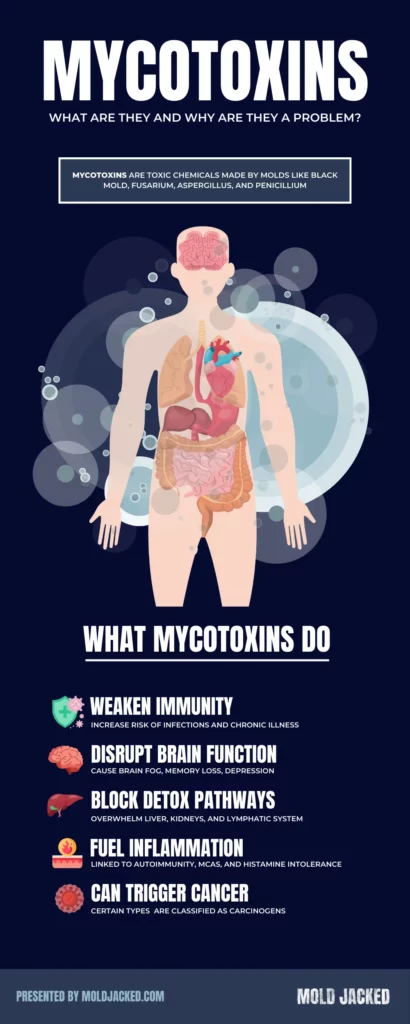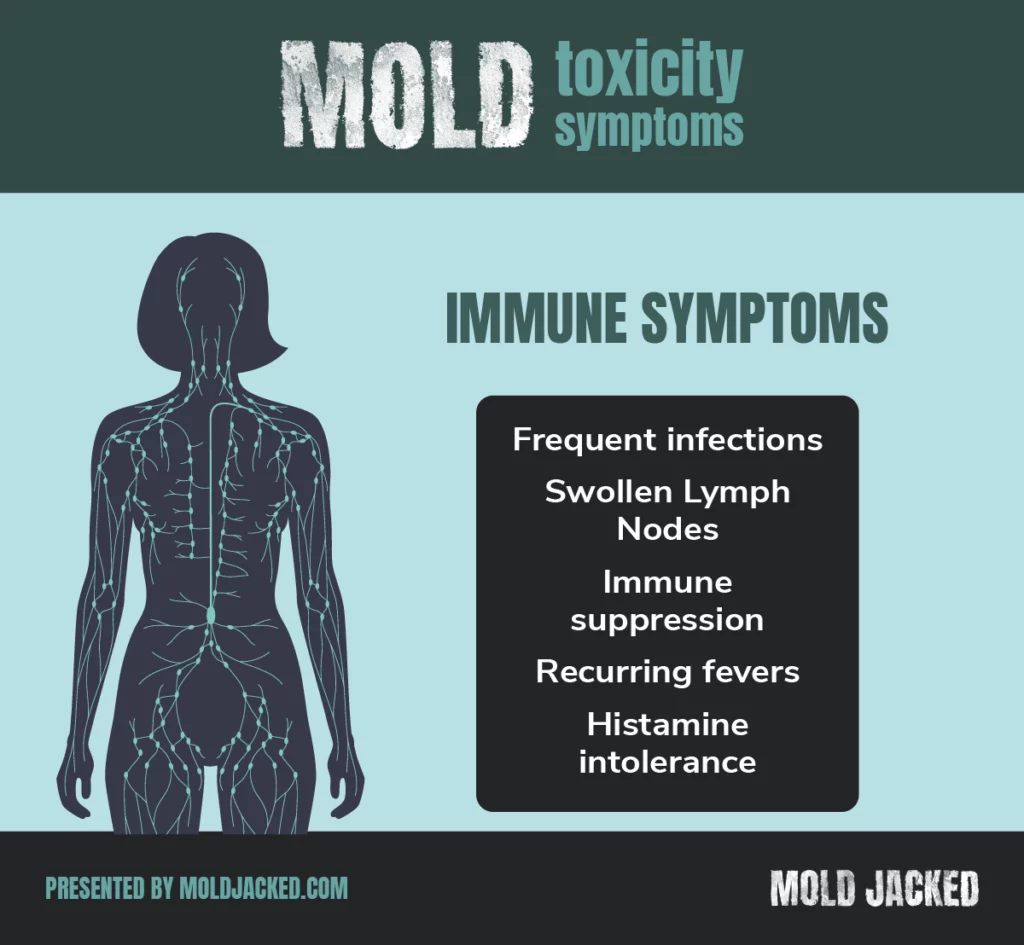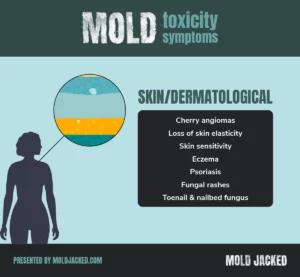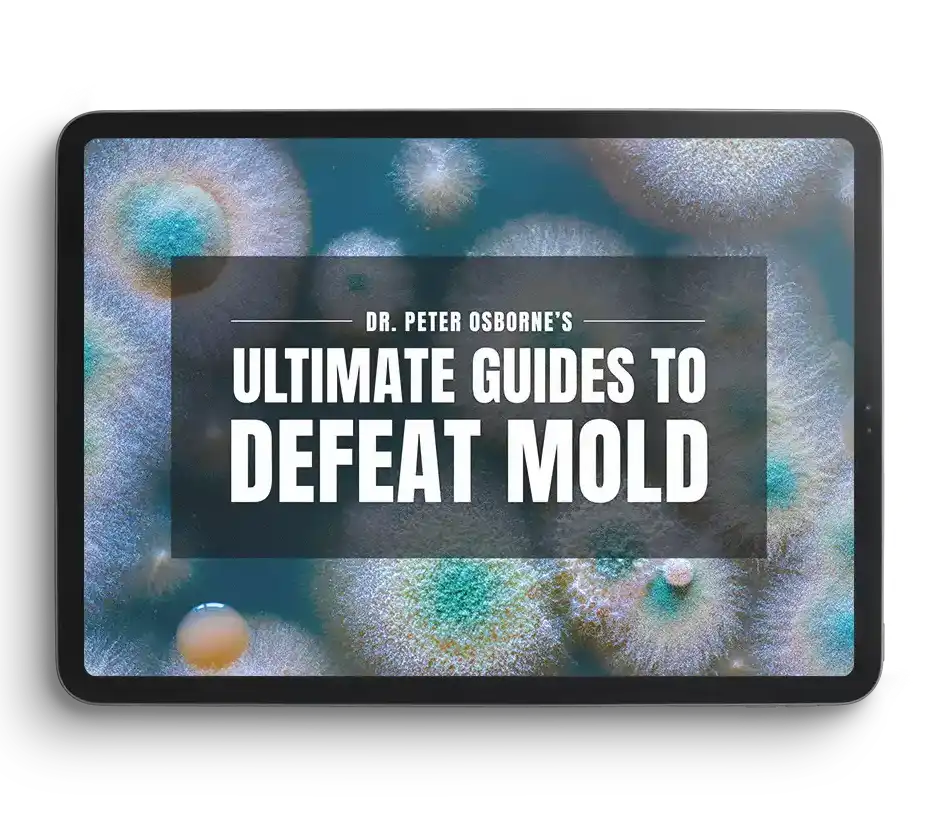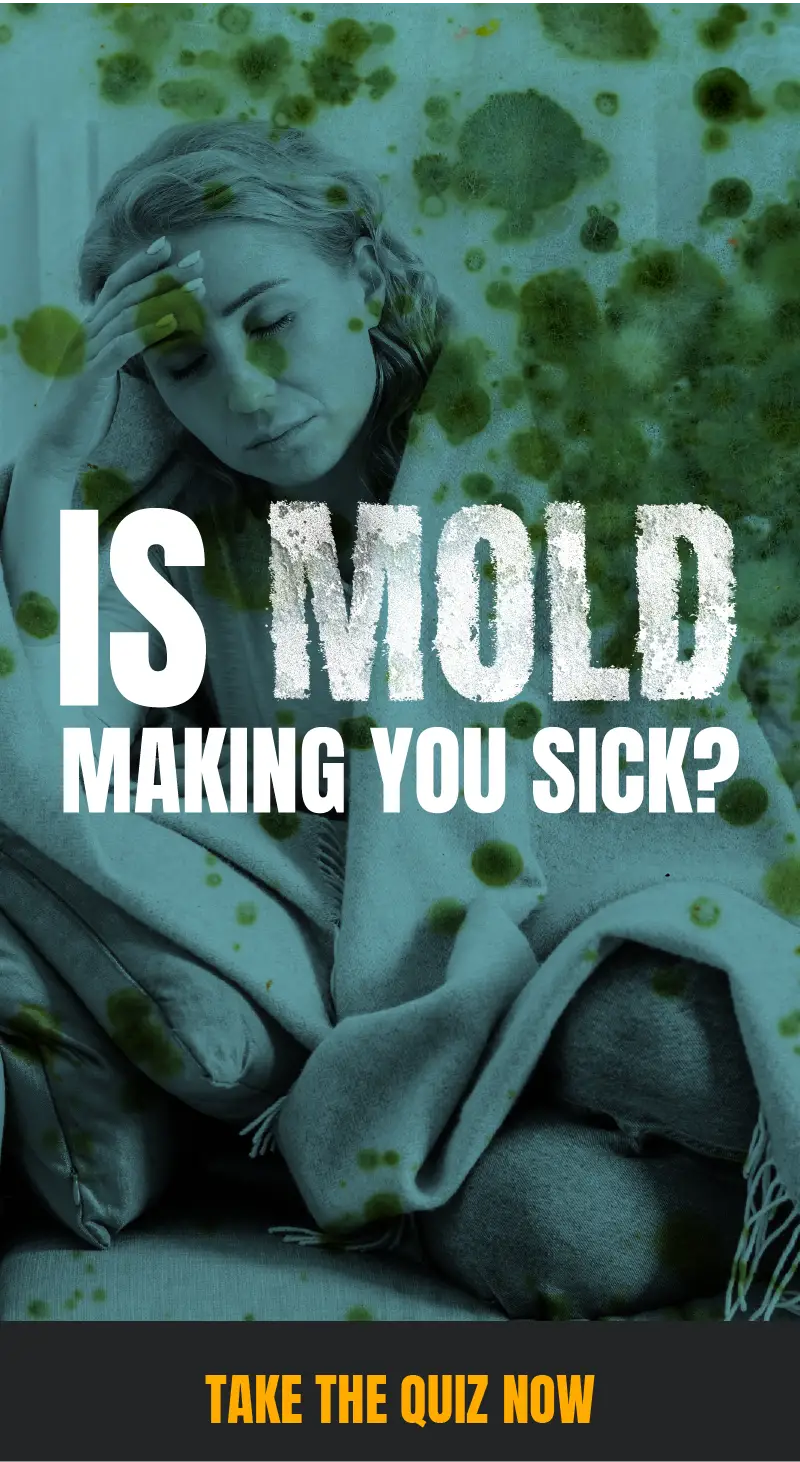How to Test for Mold Exposure and Toxicity in the Body: A Complete Guide
Mold exposure is one of the most overlooked causes of chronic illness. If you have been feeling unwell for months or even years—struggling with persistent fatigue, brain fog, sinus issues, unexplained allergies, or autoimmune-like symptoms—you might be suffering from mold toxicity without realizing it.
Many people go from doctor to doctor, receiving diagnoses like chronic fatigue syndrome, fibromyalgia, or even psychiatric disorders, without ever being tested for mold-related illness. But if you live or work in a water-damaged building, mold exposure could be at the root of your health problems.
CONTENTS
ToggleUnderstanding Mold Exposure and Toxicity
What Is Mold and Why Is It Dangerous?
Mold is a fungus that thrives in damp, humid environments. It spreads by releasing microscopic spores into the air, which can be inhaled into your lungs or settle onto surfaces and food. Some molds also produce mycotoxins—toxic chemical byproducts that wreak havoc on the immune system, nervous system, and detox pathways.
Not everyone reacts to mold the same way. Some people can live in a moldy home for years with little to no symptoms, while others may develop severe chronic illness after even short-term exposure. Genetics, immune function, and previous toxin exposures all play a role in how the body reacts to mold.
Common Sources of Mold Exposure
Mold exposure can happen anywhere, but it’s especially common in water-damaged buildings. These include:
- Homes with leaks or past flooding (basements, roofs, plumbing leaks)
- Workplaces with poor ventilation (office buildings, schools, hospitals)
- HVAC systems and air conditioning units (hidden mold in ducts and filters)
- Rental properties and older buildings (especially those with history of neglect)
- Cars and RVs with water damage
What Are Mycotoxins and Why Are They a Problem?
Mycotoxins are toxic chemicals produced by certain molds, including Stachybotrys (black mold), Fusarium, Aspergillus, and Penicillium. Unlike mold spores, mycotoxins are invisible, airborne, and can penetrate deep into the body, making them extremely difficult to detect.
Why Mycotoxins Are Harmful:
-
- They suppress the immune system – Making you more susceptible to infections and chronic illness.
- They disrupt brain function – Leading to cognitive issues like brain fog, memory loss, and depression.
- They impair detox pathways – Overloading the liver, kidneys, and lymphatic system.
- They trigger chronic inflammation – Contributing to autoimmunity, histamine intolerance, and mast cell activation syndrome (MCAS).
- They can trigger cancer – certain mold toxins are classified as carcinogens.
How Do You Know If You Have Mold Toxicity?
Many people suffer from mold exposure without visible mold in their home or workplace. This is because mold can hide behind walls, under flooring, and inside ventilation systems, making it impossible to detect without testing.
You should suspect mold toxicity if you have:
- Persistent, unexplained health issues that don’t improve with conventional treatment.
- Symptoms that worsen at home or work but improve when you leave.
- Sensitivity to smells, chemicals, or new environments (mold illness often leads to multiple chemical sensitivity).
- A history of living or working in a water-damaged building.
The only way to know for sure if mold is affecting your health is to test both your environment and your body for signs of mold exposure.
The next sections will guide you through the best ways to test for mold exposure both in your body and in your home. It will also cover how to interpret your results, and what to do if you test positive.
Health Effects of Mold Exposure
Mold toxicity is often called “the great imitator” because it mimics dozens of other chronic illnesses—including Parkinson’s, fibromyalgia, multiple sclerosis, and even psychiatric conditions like anxiety and depression. Many people suffering from mold exposure are misdiagnosed or dismissed by doctors because their symptoms seem random, unexplained, or unrelated.
If you’ve been struggling with chronic illness and haven’t found answers, mold exposure may be the missing piece of the puzzle.
Want to know more about symptoms of toxic mold exposure?
How Mold Affects the Body
Mold exposure is not just an allergy issue—it’s a full-body toxic assault that can affect nearly every organ system. The severity of symptoms depends on the type of mold, the duration of exposure, your genetic ability to detox, and the strength of your immune system.
Here’s how mold and mycotoxins can impact different systems in the body:
Respiratory System: The Most Obvious but Not the Only Problem
Many people associate mold exposure with sinus issues and lung problems, but respiratory symptoms are just the tip of the iceberg. When you inhale mold spores or mycotoxins, they can trigger inflammation in the airways, leading to:
- Chronic sinus congestion or recurring sinus infections
- Shortness of breath, wheezing, or persistent cough
- Asthma flare-ups or new-onset asthma
- Sore throat or hoarseness
Why It’s a Problem: Mold exposure weakens lung function and increases the risk of secondary infections like pneumonia. People with asthma or COPD are especially vulnerable.
Brain and Nervous System: The “Mold Brain” Effect
Mycotoxins can cross the blood-brain barrier, leading to neurological and cognitive symptoms that are often mistaken for anxiety, depression, or early dementia. Mold exposure can cause:
- Brain fog (feeling “spaced out” or mentally slow)
- Short-term memory loss or difficulty finding words
- Chronic migraines or dizziness
- Mood swings, anxiety, or unexplained depression
- Insomnia or frequent waking at night
Why It’s a Problem: Many mold sufferers feel mentally detached, overwhelmed, or unable to focus. Mold toxicity can also disrupt neurotransmitters and contribute to conditions like ADHD, panic attacks, and mood disorders.
Immune System: Why You Keep Getting Sick
Mold exposure can suppress immune function, making you more prone to chronic infections, autoimmune diseases, and multiple chemical sensitivities. Symptoms include:
- Frequent colds, sinus infections, or flu-like symptoms
- Slow wound healing or easy bruising
- Joint and muscle pains without injury
- Unexplained food intolerances or histamine reactions
Why It’s a Problem: Many mold sufferers develop autoimmune conditions like Hashimoto’s, lupus, or rheumatoid arthritis after long-term exposure.
Digestive System: Mold Can Mimic IBS and Leaky Gut
Many people with mold toxicity experience digestive issues that resemble IBS or food intolerances. Mycotoxins can disrupt gut bacteria, inflame the intestines, and trigger histamine reactions, leading to:
- Bloating, gas, or acid reflux
- Nausea or unexplained weight loss
- Constipation or chronic diarrhea
- Food sensitivities that seem to change over time
Why It’s a Problem: Mold can create intestinal inflammation, making it difficult for the body to absorb nutrients, leading to vitamin and mineral deficiencies and and their consequences.
Skin and Sensory Symptoms: External Clues to Internal Problems
Mold toxicity can manifest externally as well, affecting the skin, eyes, and sensory perception. People with mold exposure often report:
- Rashes, hives, or eczema-like skin irritation
- Red, itchy, or watery eyes
- Sensitivity to light, sound, or strong smells
- Tingling or numbness in the hands and feet
Why It’s a Problem: Skin issues are often dismissed as allergies, but they can indicate deeper systemic inflammation caused by mold toxicity.
Hormonal Disruptions: Mold Can Mimic Thyroid and Adrenal Disorders
Mold exposure can interfere with hormone regulation, leading to:
- Chronic fatigue and adrenal burnout
- Irregular menstrual cycles or worsened PMS
- Low libido and testosterone imbalances
- Thyroid dysfunction (hypothyroid-like symptoms)
Why It’s a Problem: Many mold sufferers are misdiagnosed with hypothyroidism, adrenal fatigue, or early menopause—when the real culprit is mold exposure.
Online Mold Symptom Quiz: Should You Get Tested?
If you’re unsure whether your symptoms could be mold-related, take this quick online assessment.
Click here to take the mold exposure quiz.
How to Test for Mold Exposure in the Body
If you’re experiencing persistent symptoms like those listed above, and suspect mold exposure, the next step is testing.
Testing for mold toxicity isn’t always straightforward. Many conventional doctors don’t test for mycotoxins or mold-related inflammation, and standard blood work often misses the real underlying issue. That’s why it is so important to work with a mold literate doctor.
In this section, we’ll break down the best lab tests for detecting mold exposure, explain what each test measures, and discuss how to interpret your results.
Why You Need to Test for Mold Exposure in Your Body
Mold exposure affects everyone differently. Some people develop allergies, while others suffer from neurological symptoms, autoimmune issues, or chronic fatigue. Since mold illness can mimic other diseases, testing is the only way to confirm whether mold is making you sick.
Common Reasons to Get Tested for Mold Toxicity:
- You live or work in a water-damaged building and have chronic symptoms.
- You have mystery illnesses that haven’t responded to diet change or treatment.
- You have been diagnosed with chronic fatigue, fibromyalgia, or autoimmune disease, but suspect an environmental cause.
- Your symptoms get worse indoors and improve when you leave home.
- You want to track your detox progress after mold remediation.
If any of these sound familiar, testing can help identify the root cause of your health issues.
The Best Lab Tests for Mold Exposure & Toxicity
1. Mycotoxin Testing (Urine Test) – The Most Direct Way to Measure Mold Toxins
- What It Tests For: Mycotoxins (toxic chemicals released by mold).
- How It Works: Since mycotoxins are filtered through the liver and excreted in urine, this test detects mold toxins already in your system.
- How to Prepare for the Test:
- Drink plenty of fluids the night before.
- Avoid foods like coffee, peanuts, grains, and alcohol for at least two weeks prior testing. These foods commonly contain mycotoxins and can lead to a false positive result if you are trying to identify environmental mold exposure.
- Limitations:
- If your body isn’t detoxing well, your test might show low mycotoxin levels even if you have a high toxic burden.
- A negative test doesn’t always mean you’re mold-free. It could mean your body is storing toxins instead of excreting them. Doctors will sometimes have patients take glutathione prior testing to “push” toxins out into the urine.
Best for: Confirming the presence of mold toxins in the body.
2. Allergy Testing – Measures Your Immune System’s Response to Mold
- What It Tests For: Whether your immune system is reacting to mold spores.
- Types of Tests:
- Skin Prick Test – Checks for immediate allergic reactions.
- IgE Blood Test – Measures mold-specific IgE antibodies.
- Limitations:
- Only detects allergic reactions to mold, not mold toxicity. Approximately 22% of people are allergic to different molds.
- Many mold sufferers don’t have a typical allergy but still have toxic symptoms.
Best for: People with respiratory symptoms like chronic sinusitis, asthma, or allergies.
3. Antibody Tests (IgG, IgA, IgM Blood Tests) – Detects Mold Exposure History
- What It Tests For: Your immune system’s past and present exposure to mold and mycotoxins.
- Types of Tests:
- IgG Antibodies – Shows past mold or mycotoxin exposure but doesn’t always indicate current exposure.
- IgA & IgM Antibodies – Suggest ongoing mold exposure or immune response.
- Limitations:
- IgG antibodies can remain elevated for years, making it difficult to pinpoint when exposure occurred.
- Some mold-toxic individuals don’t produce adequate antibodies, especially if their immune system is suppressed.
Helpful for: People looking for evidence of past or recent mold exposure.
4. Inflammatory Marker Tests – Identifies Mold-Triggered Inflammation
Mold exposure triggers chronic inflammation, which can be measured through specific lab markers.
- Key Tests to Consider:
- C-reactive protein (CRP) & ESR – General inflammation markers.
- Transforming Growth Factor Beta-1 (TGF-β1) – Elevated levels indicate immune system dysregulation and inflammation.
- C4a & C3a (Complement Components) – Markers for innate immune system activation, often elevated in mold-exposed individuals.
- MMP-9 (Matrix Metalloproteinase-9) – Increased levels show excessive inflammation and capillary damage. Commonly abnormal in mold-exposed individuals.
Best for: Detecting mold-induced chronic inflammation that contributes to autoimmune conditions, fatigue, and neurological issues.
5. Mold Cultures
- What it Tests For: Helps to determine if you have mold colonizing your body.
- Why it matters: Chronic mold and mycotoxin exposure can compromise the immune system, increasing the risk of mold infections (mycoses). Mold infections can remain even after a person has moved out of the moldy environment.
- Types of Cultures: Blood, sinus, GI tract, skin, and lung sputum cultures can all be performed.
6. Genetic Testing (HLA-DR Mold Susceptibility) – Determines If You’re Genetically Prone to Mold Illness
- What It Tests For: Whether your body can detox mold effectively.
- Why It Matters:
- 24% of the population has a genetic predisposition (HLA-DR genes) that prevents them from clearing mold toxins.
- If you have these genes, mold exposure can lead to long-term illness (CIRS – Chronic Inflammatory Response Syndrome).
- Best Labs for HLA-DR Testing:
- LabCorp HLA-DR Panel
- Quest Diagnostics
Best for: People with severe, chronic mold symptoms that don’t improve despite treatment.
7. General Labs – Markers That Provide “Mold Exposure Clues”
Some general labs typically performed by doctors during regular office visits can provide insight into possible mold exposure:
- Liver & Kidney Function Tests – Comprehensive Metabolic Panel (CMP), ALT, AST, Bilirubin, and ALP test elevations can indicate liver damage. Because mold toxins can stress liver function, unexplained elevations in these tests could mean mycotoxin exposure.
- Complete Blood Count (CBC) – Low white blood cells (WBC’s) can be linked to chronic mold exposure.
- Ferritin – Elevated ferritin levels are commonly elevated in patients with mold exposure. When elevated, ferritin indicates inflammation in the body.
- Hormone Tests:
- Cortisol, Estrogen, Progesterone, Testosterone – Mold exposure has been linked to endocrine disruption causing abnormalities in hormones.
- Thyroid Panel (TSH, Free T3, Free T4) – Mold and mycotoxin exposure linked to abnormal levels.
- Melanocyte-Stimulating Hormone (MSH) – Often low in mold illness, leading to immune dysfunction, sleep disturbances, and hormonal imbalances.
- Adrenocorticotropic Hormone (ACTH) & Cortisol – Dysregulated levels indicate hypothalamic-pituitary-adrenal (HPA) axis dysfunction, contributing to chronic fatigue and stress intolerance.
- Antidiuretic Hormone (ADH) & Osmolality – Low ADH with high osmolality can lead to excessive thirst, frequent urination, and electrolyte imbalances.
Best for: Understanding the full-body impact of mold exposure.
8. Doctor Examination – Identify Physical Clues That May Indicate Chronic Mold Exposure
- Physical Examination: The following may be additional clues of a mold issue
- Skin Rashes
- Toenail Fungus
- Visual Loss – Visual Contrast Sensitivity (VCS) Test – used as a screening tool for neurotoxin exposure.
- Respiratory Wheezing
- White coating on the tongue
- Imaging Studies:
- “Fungal balls” or masses can grow in the body. They can be seen on x-ray, MRI, and CT scans.
- NeuroQuant MRI – A specialized MRI that assesses brain volume changes associated with mold exposure and chronic inflammation.
What Should You Do If You Test Positive for Mold?
If your lab results allude to toxic mold and mycotoxin exposure, don’t panic—you can recover. The next steps are to:
- Identify and remove the source of mold in your home or workplace.
- Work with a mold-literate doctor to develop a personalized strategy.
- Begin a detox protocol to help your body eliminate toxins.
Identifying Mold in Your Environment
If you’ve tested positive for mold exposure—or you suspect that your home or workplace might be making you sick—the most important step is to find and eliminate the source.
Mold is often invisible and hides in places you wouldn’t expect—behind walls, inside HVAC systems, under flooring, or even in furniture. Many people can’t see or smell mold, yet still suffer from severe mycotoxin exposure.
This section will help you identify mold in your environment using both DIY and professional methods.
1. Signs That Mold Might Be in Your Home or Workplace
Even if you don’t see mold, these clues can indicate a hidden problem:
- Musty or damp odor (even faint or occasional)
- Water stains, peeling paint, or bubbling wallpaper
- Past water damage (flooding, roof leaks, pipe leaks)
- Condensation on windows or inside walls
- Increased allergy or respiratory symptoms at home
- Clothes or fabrics that smell damp after washing
- HVAC systems that spread dust or unusual odors
Did you know? 50% of buildings have some form of water damage, making mold exposure very common, even in “clean-looking” spaces.
2. DIY Home Mold Testing: Methods You Can Try Yourself
If you suspect mold exposure, it is highly recommended that you hire a professional inspector. DIY kits can provide some clues and insights, but a professional inspection should be performed to minimize the risk of missing the problem. That being said, this comprehensive guide will help get a head start on finding mold in your home. Additionally, the following are some DIY assessment tools commonly used:
Mold Test Plates (Petri Dish Kits)
- Measures mold spores inside your home.
- Uses small collection plates to collect spores.
- Affordable and easy to use but not always sensitive enough.
- Does not identify the types of molds present
Best for: Checking general mold presence in different rooms.
Surface Swab & Tape Tests
- Identifies mold growth on visible surfaces.
- Can help to confirm if discoloration is mold or other microbial growth.
- Requires lab analysis for specific mold species.
Best for: Testing suspicious spots on walls, furniture, or vents.
ERMI Dust Testing
- ERMI (Environmental Relative Moldiness Index) ranks home mold levels.
- Uses dust samples to detect mold spores.
- *Drawbacks – does not detect mold fragments, VOC’s, or mycotoxins.
Best for: Detecting hidden mold in homes with chronic illness cases.
Hiring a Professional Mold Inspector
If DIY tests show elevated mold levels, or if you have ongoing health issues without an obvious source, you should hire an expert mold inspector.
***It is important to note that a cursory visual inspection combined with air testing DOES NOT CONSTITUTE A MOLD INSPECTION.
What a Professional Mold Inspection Includes:
- Physical inspection of the property
- Infrared Thermal Imaging
- Air & Surface Sampling
- HVAC System Inspection
Read my comprehensive guide on how to hire the right mold inspector.
Next Step: If You Find Mold, What Do You Do? Read on to learn about removing mold and detoxing your body.
Steps to Take After Confirmed Mold Exposure
If you’ve tested positive for mold in your body or home, it is important to stay as objective as possible when going through remediation, detox, and mold proofing your future. The following are general guidelines for you to consider.
1. Environmental Remediation: Removing Mold from Your Home
- Effective Remediation can be complicated. It is highly recommended that you either hire a reputable remediation company, or consult with an expert should you plan to do the work yourself.
- The primary goal of remediation is to find the source of water or moisture and fix it. Once the water issue is resolved, all contaminated materials must be either removed from the home or properly cleaned.
Read my comprehensive guide on mold remediation here.
2. Detoxing Mold from Your Body
Mold toxins can accumulate in the body and need to be actively flushed out. This process requires several key strategies.
- Take Binders – Activated charcoal, zeolite, and fulvic acid
- Support Liver Detox – Glutathione, NAC, vitamin C
- Sweat it Out – Infrared saunas, exercise to tolerance
- Mold Elimination Diet – No Grain No Pain is a great place to start
Pro Tip: Work with a mold-literate doctor who understands mold detox protocols. Read my comprehensive guide on mold detoxification.
3. Preventing Future Mold Exposure
- Keep indoor humidity below 50% – Use dehumidifiers if needed.
- HEPA air filters – Reduce airborne mold spores.
- Inspect your home regularly – Look for leaks, condensation, and musty smells.
- Test before buying or renting a home – Many buildings have hidden mold problems.
Read my comprehensive MOLD PROOFING GUIDE
Final Thoughts: How to Test for Mold Toxicity
One of the most painful parts of dealing with mold-related illness isn’t just the symptoms, it’s the disbelief from others. Many people suffering from unexplained fatigue, neurological issues, or chronic inflammation are dismissed by doctors, labeled as anxious, or told their illness is “all in their head.”
Friends and family may grow skeptical, unable to understand why their loved one is suddenly sensitive to their environment or struggling in ways they can’t see. This kind of gaslighting can leave you questioning your own experience, making an already difficult journey even more isolating.
But here’s the truth: Your symptoms are real. Your experience is valid. And you are not alone. Mold toxicity is a growing but under-recognized issue, and many people just like you have had to fight to be heard. It’s frustrating when traditional medicine overlooks environmental factors like mold, but that doesn’t mean you won’t find answers. By testing for mold in your body, you are taking control of your health and gathering the objective proof that you need to make intelligent decisions on how to move forward.
The “mold road” isn’t always easy. It takes persistence to uncover the full picture, make changes, and heal. But you are stronger than you think, and with the right tools, you can find your way forward.
Yours in mold recovery,
Dr. Osborne
